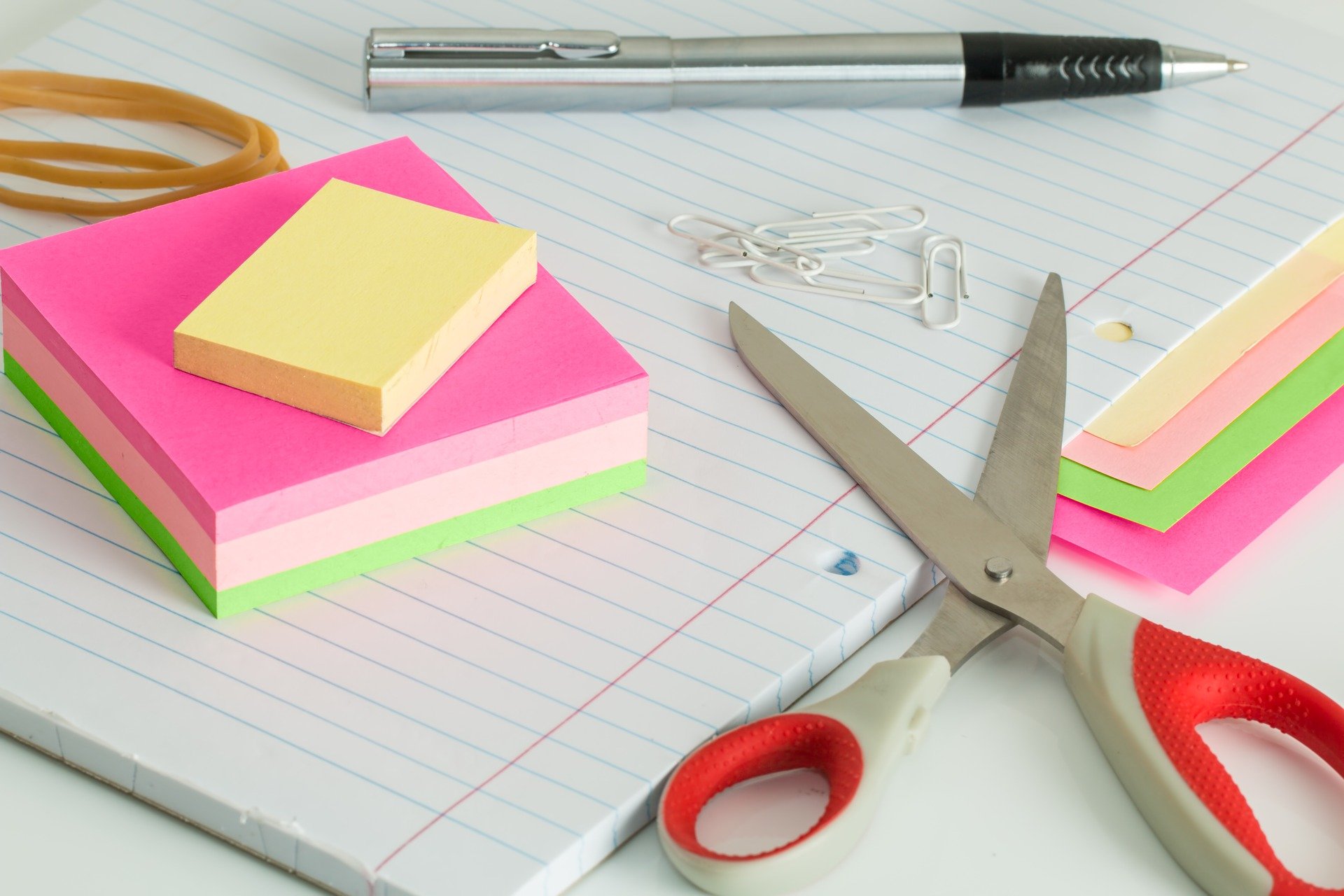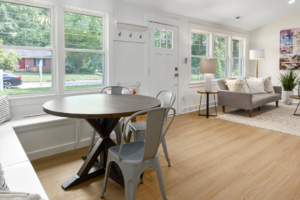3 Steps to Adopt a Right-size Mindset for your Space (& decrease stuff-overwhelm)
If I say downsize, you probably think of moving to a smaller house or being laid-off a job. If I say right-size, you may think of a company reorganization in which some people are dismissed. Neither of those is incorrect, although downsize is a more recent euphemism for being let go from a job.
 Either word is usually associated with something less than pleasant or even negative.
Either word is usually associated with something less than pleasant or even negative.
I’d like to suggest that we shift our mindset when considering these words.
According to the dictionary, downsize means “to reduce in number.” Similarly, right-size indicates “to adjust to an appropriate size.” As such, these words can be neutral or even good, as in, “I’ve downsized and lost 15 pounds” or “I’m working to right-size so my blood pressure stays in check without needing to take medication.” Okay, those examples may be a stretch, but hopefully, you get the idea.
In our continuing series on Life Transitions, right-sizing may be associated with many different passages. The one we automatically think of is aging because usually, someone is relocating to a smaller home. Similarly, divorce may involve moving to a place with less space.
However, there are other instances in which right-sizing is useful:
- Combining households
- Adding family members (children, older adults)
- Status change such as a different life stage or work situation
In addition, there are some people who make a conscious decision to own or rent a small place due to benefits such as less upkeep (which means more time on activities you like). Recently there have been articles about millennials purposely deciding to buy littler homes because they are looking for a quality of life that often isn’t attainable when owning a larger house.
Related to millennial home-buying preferences have been articles about the children of baby boomers not wanting to take the items their parents want to give them as the parents downsize.
I’d like to propose a new mindset for everyone: let’s adopt a RIGHT-SIZE MINDSET for the physical spaces in our personal and professional life. I’m specifically referring to the definition mentioned above in which right-size means “to adjust to an appropriate size.”
Why would we do this? Because stuff-overwhelm is real and it’s only going to increase unless we take steps to stop it.

How do we do this?
#1. Reboot your clutter radar. You’re probably thinking, “I can tell you where I have clutter!” I’m not talking about the where as much as the how and why.
Home: If you have papers, bags, books, and other items on your kitchen island and/or table, what’s the reason it landed there? Is it a time matter in which you (or others in your household) didn’t make the time to put the stuff away? Is it a responsibility problem: the person who is supposed to put it away didn’t or maybe the duty for storing it isn’t assigned to someone? Is it a location issue: the item doesn’t have a home or the storage spot is full?
Office: Is your desk covered with electronic devices, folders, notes from others, and more, such that you have to move stuff in order to actually work? Is it mainly from you or others? Is it a matter of transit time in which your rushing from one meeting to another and don’t create time to remove items from the desktop? Is it a system glitch: you don’t have a good process for reference vs. action items?
Bottom-line: Developing awareness for the what, how, who, when, and where of your things helps you right-size your stuff.
#2. Set real boundaries. Right-sizing is all about creating parameters. Start with the total amount of space, the specific number of items used, the size of the items, and appropriate accessibility, to establish appropriate borders.
Home: Your linen closet is crowded: when you put clean towels in, you quickly close the door hoping that nothing falls out. Before you say that your linen closet is too small, let’s evaluate. How many people live in the house? In general, two sets of sheets/towels per person is adequate since one set can be washed while using the other. Given this baseline, will you delete the extras beyond two sets of each? You could decide that a boundary of three sets of sheets/towels per person is better for your lifestyle. If you have young children, you might need five sets for them and two sets for others. And as the young children get older, the number of linens for them decreases.
Unless you have guests on a constant basis, one set of towels/sheets per number of visitors you can house at any given time is sufficient.
Instead of a number of linens per person, your boundary might be space allocation. Maybe you decide that your sheets/towels are permitted to take up three shelves.
Office: There are pens, notepads, staples, and other extra office supplies in your desk drawers and closet. Despite the amount you have, you often have trouble locating what you want when you need it. First, using your awareness skills, determine what supplies you actually use. For instance, I only use click-top pens, so I donated any pens with caps because I knew I wouldn’t use them.
Once you know which supplies you utilize, decide how often you use different supplies. I use highlighters a lot so I need space to house about a dozen. I don’t print much, so I only need one box of staples at a time.
Then you can decide how and where to contain the supplies. For instance, I use clear shoe pockets to store highlighters, paper clips, pens, paper clips, sticky notes, etc. This provides limits and great accessibility.
Bottom-line: Boundaries keep you from upsizing!
#3. Decrease brain chatter. Minimizing your inside chatter means calming the voices in your head that want you to keep too much or purchase more than you need.

Home: You’ve received gifts from many people over the years. Some have been used or are on display. Others are packed away. While you like some of them, there are some you are ready to delete, until that little voice pipes up and says, “you can’t give that away because Aunt Sue will ask about it next time she’s here.”
Whether or not Aunt Sue makes a comment, the gift was given to you. This means that you get to decide what happens to it next.
You can create a phrase for when Aunt Sue visits: I really appreciated the gift. I find that I’m not using it anymore so I decided to donate it to someone who will enjoy it.

Office: You have several bookshelves of training materials that you rarely view. Some are outdated and others are duplicates of what you can find online. You realize the bookshelves could be better utilized, however, your internal chatter says, “It’s so quick and easy to look at the physical materials if I need them” and “I know I can find the information online, but I’m sure it would take more time to find it.”
Time to silence that voice! Take 15 minutes and learn how to access the materials online. Keep the link and password in a safe and accessible spot.
Bottom-line: Talking back to your inside chatter, or using similar strategies, will help you minimize inside clutter.
A right-size mindset is the foundation for managing stuff-overwhelm. Why? Because right-size means that you can make adjustments as your personal and professional circumstances change. And we know that life transitions are ongoing!
Tag:ADHD, anxiety, autoimmune disease, brain based disorders, clutter, depression, life transitions, Life Transitions Organizing, Life Transitions Resources, life-disrupting situation, mindset, productivity and organizing professional, professional organizer, stuff overwhelm, stuff transitions, TBI, Transition Success Program


